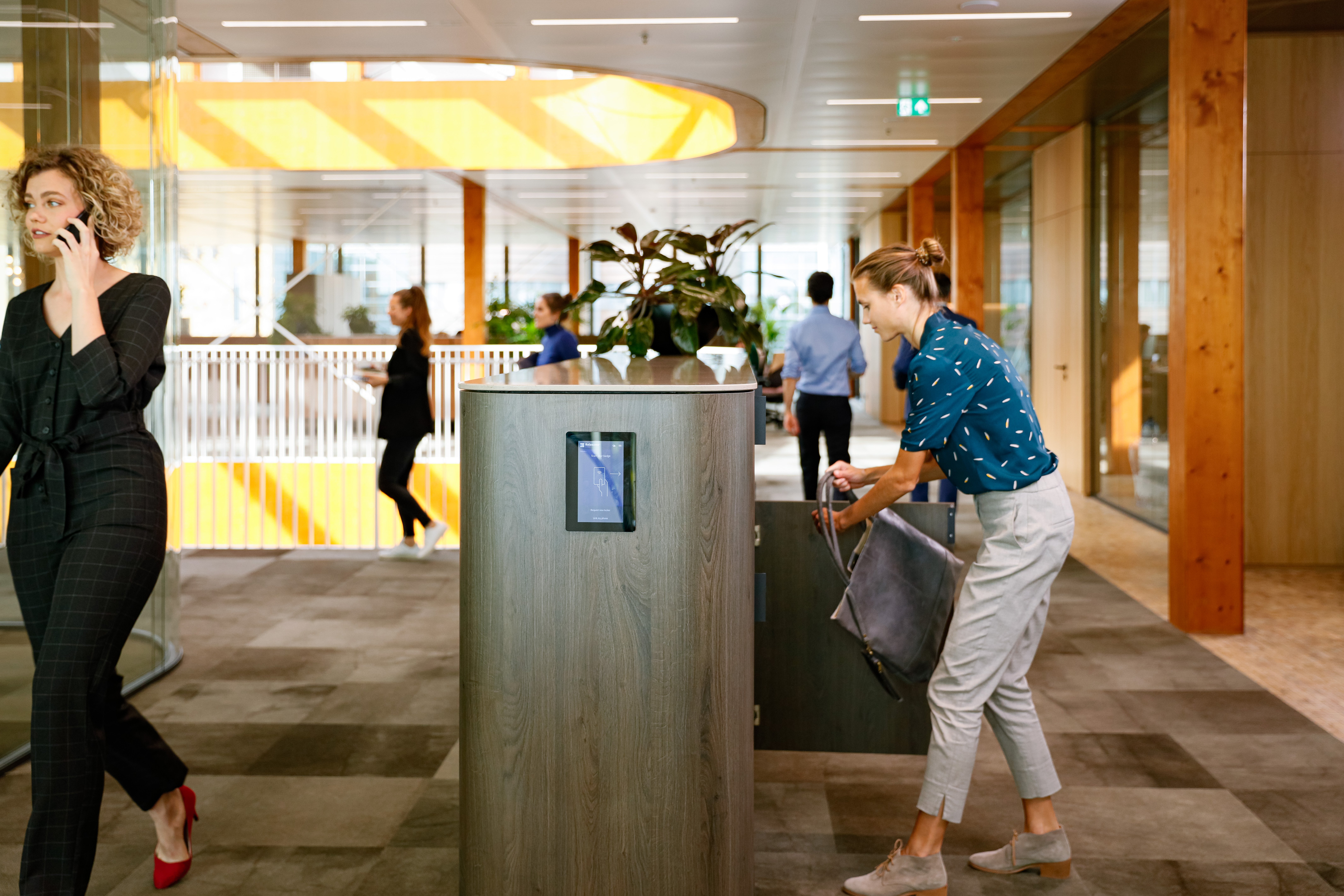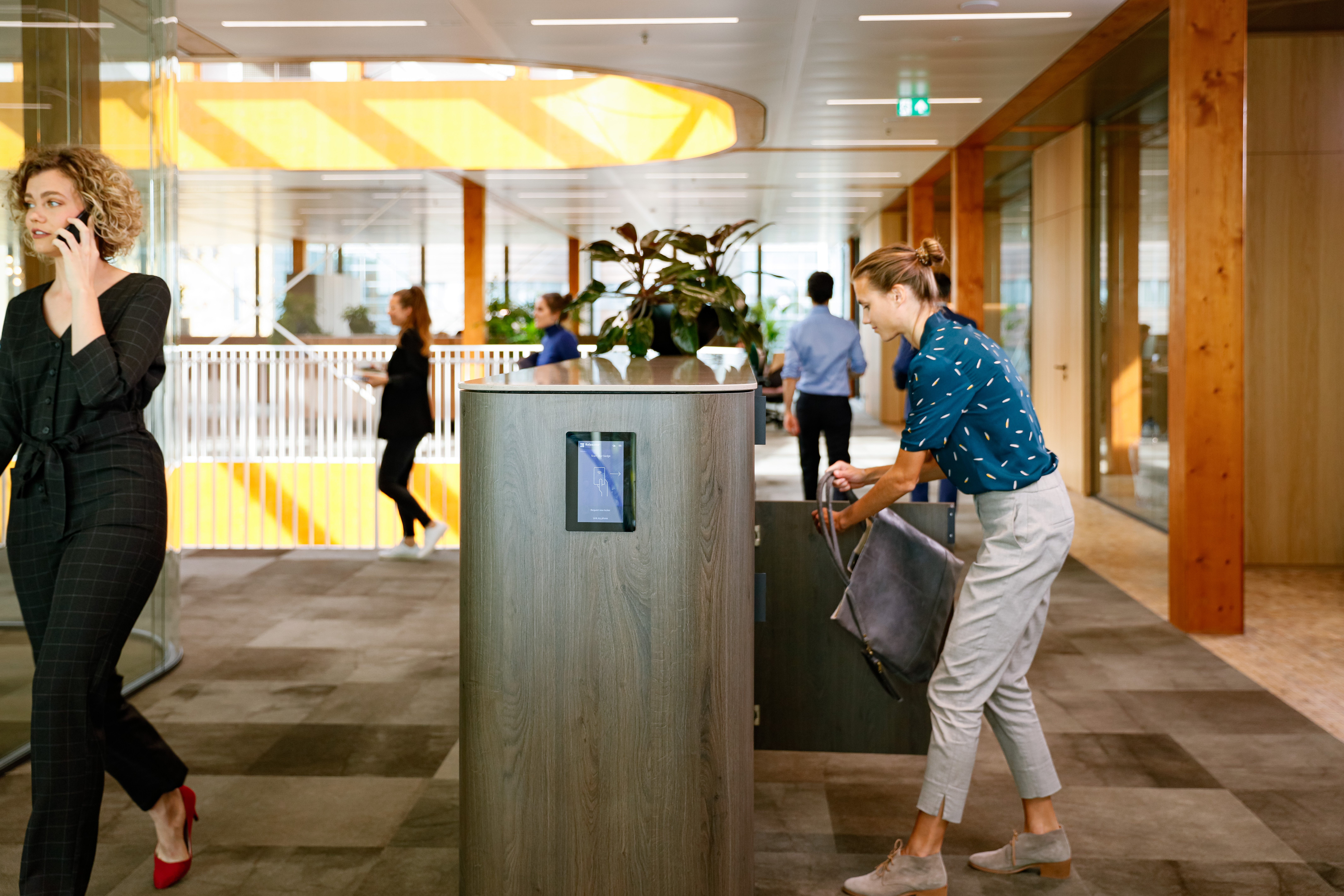Activity Based Working is a concept that is often confused with simple flex offices or other desk sharing solutions. So what actually is Activity Based Working? Activity Based Working (ABW) is a way of working in which employees make shared use of a diversity of work settings that have been designed to support different kinds of activities (hence the name Activity Based). Whether it’s developing ideas, delivering content or sharing knowledge. This has physical implications for the different activities and the dedicated facilities needed for those specific activities. Besides physical changes ABW also demands an effective virtual working environment so that employees can collaborate wherever they are. What else do we know about Activity Based Working?
Activity Based Working is a concept that is often confused with simple flex offices or other desk sharing solutions. So what actually is Activity Based Working? Activity Based Working (ABW) is a way of working in which employees make shared use of a diversity of work settings that have been designed to support different kinds of activities (hence the name Activity Based). Whether it’s developing ideas, delivering content or sharing knowledge. This has physical implications for the different activities and the dedicated facilities needed for those specific activities. Besides physical changes ABW also demands an effective virtual working environment so that employees can collaborate wherever they are. What else do we know about Activity Based Working?
ABW demands companies to reconsider the purpose of the office. It means that the company needs to take a look at the facilities that people need to execute specific tasks in the best way and how this can be implemented in the current working environment. Generally speaking, fixed work points, desks, or offices are now used less than 50 per cent of the time, signifying a huge waste, not only in terms of square meters and sustainability, but also in operating costs.

Flexible locker management as part of your activity based working strategy
Besides reducing fixed work points, the same goes for locker management. Working with a dynamic locker solutions motivates both employees and visitors to freely move through the office. In this case they can store their belongings next to the workplace that best suits their current activities. People can use a locker for their personal belongings anytime, but there is no need to have a fixed locker for every person all the time. If you implement a dynamic locker management system as a part of your ABW, you will be able to reduce the amount of lockers needed with 30%. Which means that your operation costs reduce as well. This shows that there is an obvious financial incentive for adopting ABW, as the concept allows organizations to make better use of their office space. Just as important, however, is the concept’s aim to empower employees by giving them more control over where and when they work.
Juriaan van Meel (2) summarized the benefits of activity based working for both the employees and the organization in a short overview:
Benefits for the organization:
- Reduced occupancy costs
- Smaller environmental footprint
- Increased flexibility
- Better interaction across teams
- Potential improvement in staff performance
- Support for cultural change
Benefits for employees:
- More autonomy in choosing where to work
- More choice and variety in work settings
- Advanced technologies that facilitate mobile working
- More contact with colleagues
- Fewer hierarchical differences
- A less sedentary, healthier workstyle
- Fewer but better workplaces

Healthier employees in ABW offices
Let’s dive deeper in some of those advantages. The available research on health related to activity based working shows that there seems to be a positive impact on people’s well-being. A Swedish study showed the differences on health between ABW offices and open-plan offices.
First we share our definitions of those two types of workspaces.
An open-plan office space is an office floor plan that eliminates the private offices. In this concept there might be a few meeting rooms, but the majority of the day everybody works in the same space.
This differs a lot from the activity based office concept, where people can choose from a variety of workspaces, each designed for a specific activity. This means that there is an open-office plan, but for example also workspace for more concentration and spaces for teamwork.
The study found that ABW offices score high on health, whereas open-plan office types generally score low. One explanation for this may lie in the increased sense of personal control over the work environment. Another possible reason may lie in a change in people’s ‘sitting behaviour’. There is an Australian study in which employees reported reduced sitting time (by 14%) and increased time spent standing (11%) and walking (3%), although these figures could not yet be supported by actual measurements (3).
How activity-based working affects the employees performance
Dutch researchers Susan Smulders and Denise Clarijs (4) researched the effect of an activity based working environment on productivity and they concluded that nearly 70% of the participants in the study experienced increased productivity and two-thirds feel their work is more stimulating. Over 60% of the people actually responded that they have more energy in an activity based working environment.
Important take-aways to successfully implement activity based working
So far we’ve shown many advantages of activity based working. However, ABW has some side notes as well. People’s willingness to change behaviour is often limited, in which case people do not exploit ABW’s full potential. Therefore it is key to put this topic on the agenda in your change management program to make sure that the employees successfully adopt the new working style. Then, most people’s complaints about ABW concern distractions, or too much noise and a lack of privacy (5). Take those complaints in consideration while designing the office spaces and you highly increase your changes of a successful activity based working concept!
Overall is the conclusion of activity based working that it can be very beneficial for your company, but the implementation has to be spot on. In the end your new strategy needs to match the actually needs of the people and there are many types of people with many type of work activities. Therefore make sure to get the right advise while running a change management program to be sure that you will achieve the desired results.
Vecos can advise you for example on how to optimize the locker management in an Activity Based Working environment. If you want to know more about this, please contact us and we will reach out to you.
Resources
1 Using ABW to break boundaries in the mind, Veldhoen Company, 2019, via https://www.veldhoencompany.co...
2 Activity Based Working- The Purenet Practice Guide, Juriaan van Meel, https://www.cfpb.nl/media/uplo...
3 The rise and rise of Activity Based Working, Leesman, 2019, via https://www.leesmanindex.com/T...
4 Activity-Based Working is Making a Positive Impact on the Workplace, Elizabeth Dukes, 2019, via https://www.iofficecorp.com/bl...
5 Activity Based Working- The Purenet Practice Guide, Juriaan van Meel, via https://www.cfpb.nl/media/uplo...




